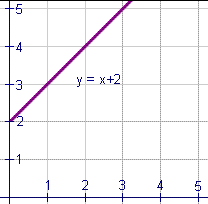Growth
Pronunciation: /groʊθ/ ExplainGrowth is an increase in quantity. When one says, "I've grown one inch in the last month," one is stating that their height has increased by one inch. Mathematicians also use the term negative growth to mean a decrease in quantity.
Mathematics is often used to study and predict growth. Models of growth that are often used by mathematicians are arithmetic growth, geometric growth and exponential growth.
Arithmetic Growth
 |
| Figure 2: Snow crystal growth. Click on picture to see movie. Courtesy SnowCrystals.com. |
Arithmetic growth occurs at a constant rate each time period. Arithmetic growth is also called constant growth and linear growth. For example, if a crystal grows in length 1 inch every year the constant rate of growth is 1 inch/year. The crystal grows 1 inch the first year, and 1 inch the second year, and so on.
| Year | Crystal Size |
|---|---|
| 0 | 2 inches |
| 1 | 3 inches |
| 2 | 4 inches |
| 3 | 5 inches |
| 4 | 6 inches |
| 5 | 7 inches |
| Table 1: Arithmetic growth of a crystal. | |
The general formula for arithmetic growth is y = ax + i. a represents the growth rate, and i represents the initial quantity. Using the data from Table 1, the formula for this crystal growth is y = x + 2.
Note that the equation is a linear equation in slope-intercept form (y = mx + b). When we graph arithmetic growth, the result is a line where the growth rate is the slope, and the initial quantity is the y-intercept.
 |
| Figure 1: Graph showing arithmetic growth |
Geometric growth
Geometric growth occurs at an increasing or decreasing rate each time period. The general formula for geometric growth is y = a · tb where y is the quantity at time t, a is the initial quantity and b is the growth rate.
Exponential growth
For more on exponential growth, see Exponential Function.
References
- McAdams, David E.. All Math Words Dictionary, growth. 2nd Classroom edition 20150108-4799968. pg 88. Life is a Story Problem LLC. January 8, 2015. Buy the book
- Linda Almgren Kime, Judy Clark, Beverly K. Michael. Explorations in College Algebra. 4th edition. pp 266-276,298-309. Wiley. November 16, 2007. Last Accessed 7/11/2018. Buy the book
More Information
- McAdams, David E.. Exponential Function. allmathwords.org. All Math Words Encyclopedia. Life is a Story Problem LLC. 2/8/2010. https://www.allmathwords.org/en/e/exponentialfunction.html.
Cite this article as:
McAdams, David E. Growth. 4/21/2019. All Math Words Encyclopedia. Life is a Story Problem LLC. https://www.allmathwords.org/en/g/growth.html.Image Credits
- All images and manipulatives are by David McAdams unless otherwise stated. All images by David McAdams are Copyright © Life is a Story Problem LLC and are licensed under a Creative Commons Attribution-ShareAlike 4.0 International License.
Revision History
4/21/2019: Updated equations and expressions to new format. (McAdams, David E.)12/21/2018: Reviewed and corrected IPA pronunication. (McAdams, David E.)
7/10/2018: Removed broken links, updated license, implemented new markup, implemented new Geogebra protocol. (McAdams, David E.)
2/8/2010: Added text on geometric and exponential growth. Added "References" (McAdams, David E.)
3/10/2009: Clarified definition of exponential growth to be a 'fixed multiple'. (McAdams, David E.)
8/7/2008: Added 'calculation' to exponential growth of bacteria table. (McAdams, David E.)
6/7/2008: Corrected link errors. Corrected spelling (McAdams, David E.)
5/5/2008: Initial version. (McAdams, David E.)
- Navigation
- Home
- Contents
-
# A B C D E F G H I J K L M N O P Q R S T U V W X Y Z - Teacher Aids
- Classroom Demos
- How To
- LIASP
- LIASP Home
- Conditions of Use
- Privacy Policy
- Donate to LIASP
- Help build this site
- About LIASP
- Contact LIASP
All Math Words Encyclopedia is a service of
Life is a Story Problem LLC.
Copyright © 2018 Life is a Story Problem LLC. All rights reserved.
This work is licensed under a Creative Commons Attribution-ShareAlike 4.0 International License